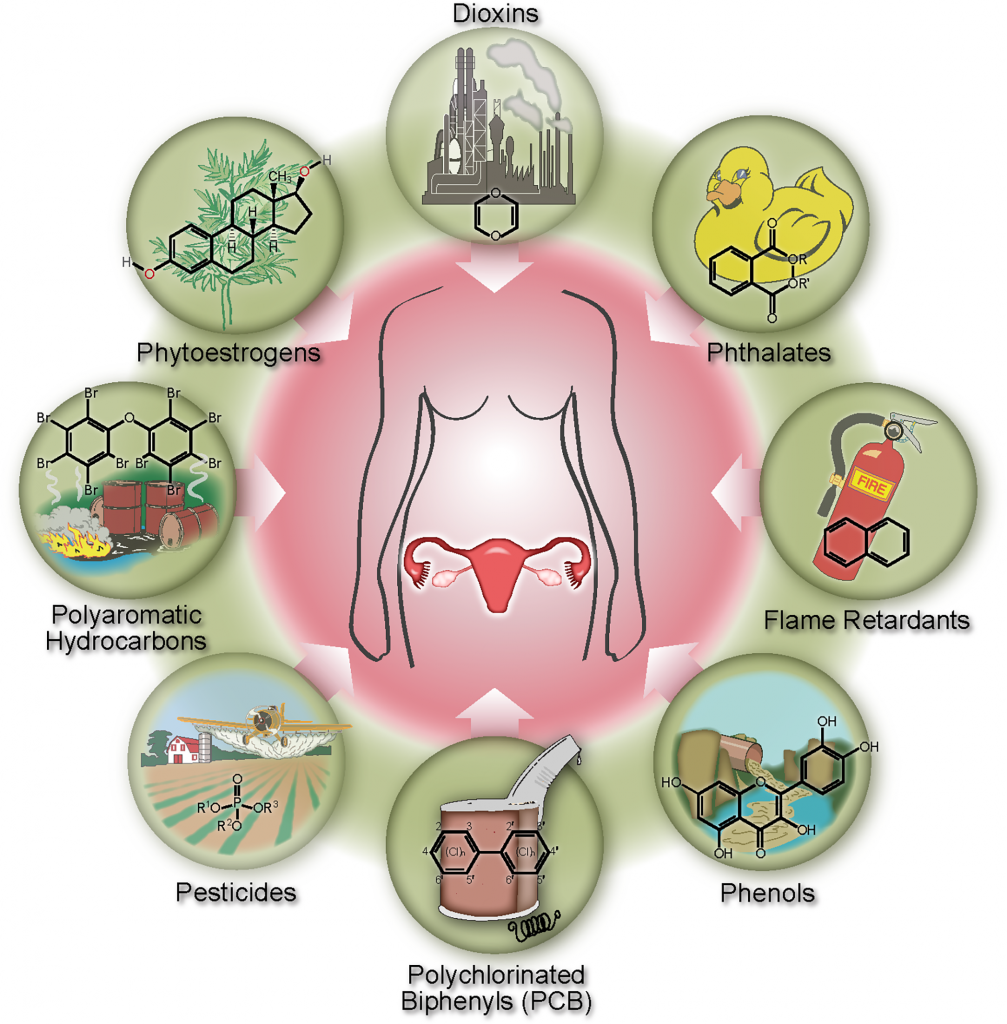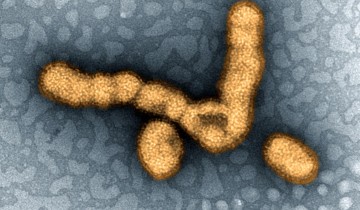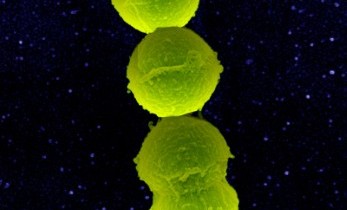There are as many endocrine-disrupting chemicals (also called endocrine disruptors) as there are deleterious health effects caused by them. These chemicals mimic the body’s hormones and confuse our physiological systems — we respond to them with a series of inappropriate changes that, depending on the specific endocrine disruptor, lead to the development of obesity, cancer, malformation of sex organs, and more. They are pervasive in the environment — they’re found in the soil, air and water throughout the world — and many persist for long periods of time. Thus, it’s not surprising that, in 2013, the impact of endocrine disruptors on human health was defined as a “global threat” by a group of experts convened by the United Nations Environment Programme and the World Health Organization.

Grindler et al., DOI: 10.1371/journal.pone.0116057, CC BY 3.0
Phthalates are some of the most studied endocrine disruptors. They’re used to make plastic more flexible and cosmetics smoother. Phthalate use in children’s toys was banned in 2008. However, results from a recent study show that high amounts of certain phthalates are present in some meats, cooking oils and dairy products, thus contributing to children exposure despite the ban. In her article “A threat to male fertility“, Deborah Blum writes: “A growing body of work over the last two decades suggests that phthalates can rewire the male reproductive system, interfering with the operation of androgenic hormones, such as testosterone, that play key roles in male development. That mechanism, some experts believe, explains findings that link phthalate exposure to changes in everything from testicular development to sperm quality.”
In addition, according to results from a new study, two phthalates belong to a group of 15 chemicals that are significantly associated with early menopause and may have detrimental effects on ovarian function. Earlier menopause and decline in ovarian function may adversely affect fertility and lead to earlier development of heart disease and osteoporosis. The other chemicals are nine polychlorinated biphenyls, three pesticides, and a furan. Women that have high levels of these chemicals in their bodies experience menopause two to four years earlier than women with lower levels of these chemicals.
For the study, the researchers analyzed data collected from 1999-2008 as part of the National Health and Nutrition Examination Survey, conducted by the U.S. Centers for Disease Control and Prevention. The survey incorporated data from 31,575 people, including 1,442 menopausal women who had been tested for presence of endocrine-disrupting chemicals in their blood and urines. It was designed so that the women who had undergone chemical testing would represent a population of almost 9 million menopausal women. The strongest association with early menopause was found for mono-(2-ethyl-5-hydroxyhexyl) phthalate and mono-(2-ethyl-5-oxohexyl) phthalate, which are found in many common household products.
Amber Cooper, senior author of the study, said in a press release: “Earlier menopause can alter the quality of a woman’s life and has profound implications for fertility, health and our society. Understanding how the environment affects health is complex. This study doesn’t prove causation, but the associations raise a red flag and support the need for future research.”
One of the problems in studying endocrine-disrupting chemicals is that they may have heightened or different effects when present in combination in the body, which is the most common occurrence.
Cooper told NBC News: “At the end of the day, I think the most important thing is to stress this is just a study we hope raises awareness.” Hopefully, future research will clarify the role that endocrine disruptors may play in early menopause and in human health in general, and thus lead to appropriate regulatory actions.
This post first appeared February 23, 2015, on The Global Fool.


